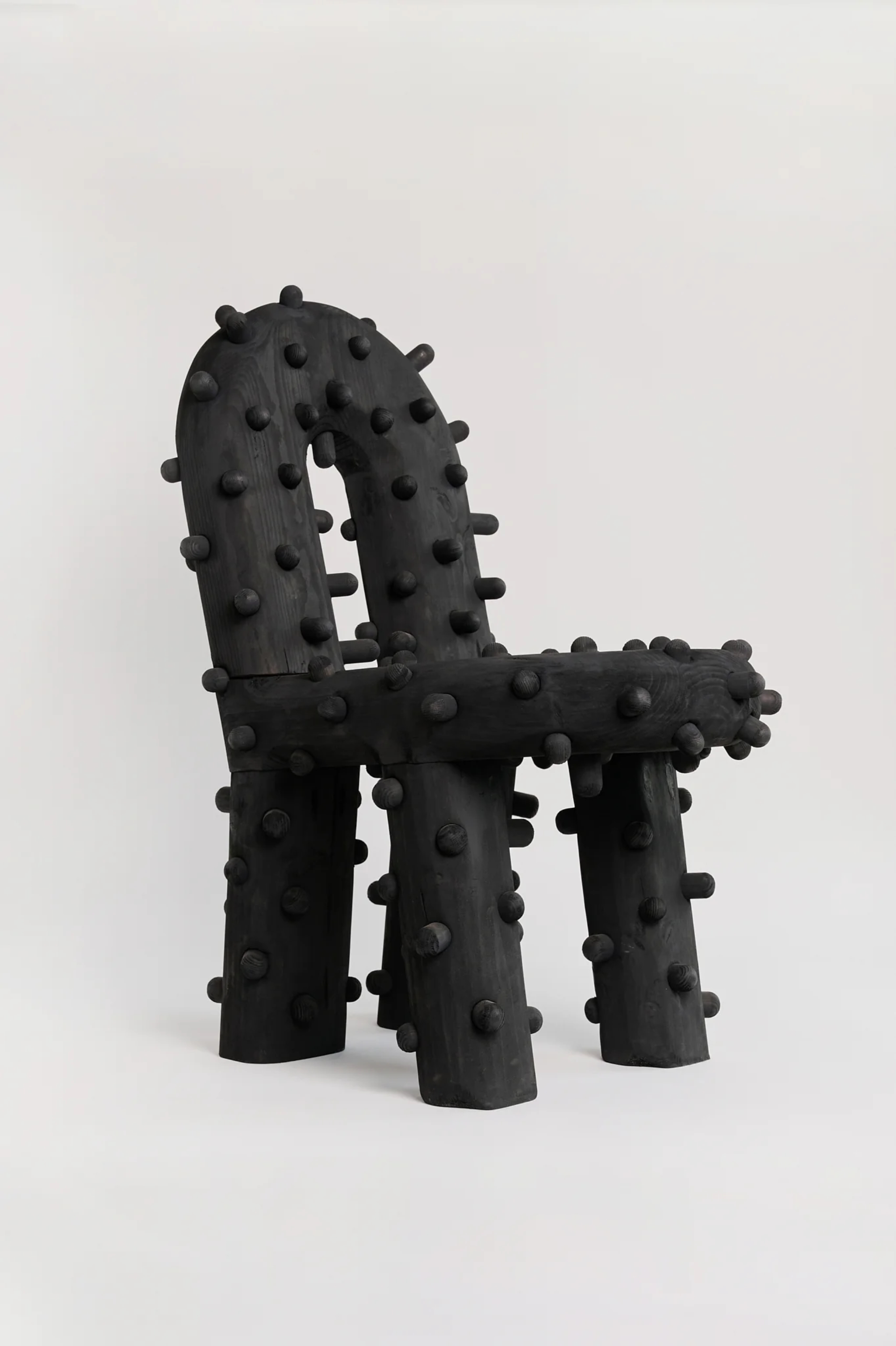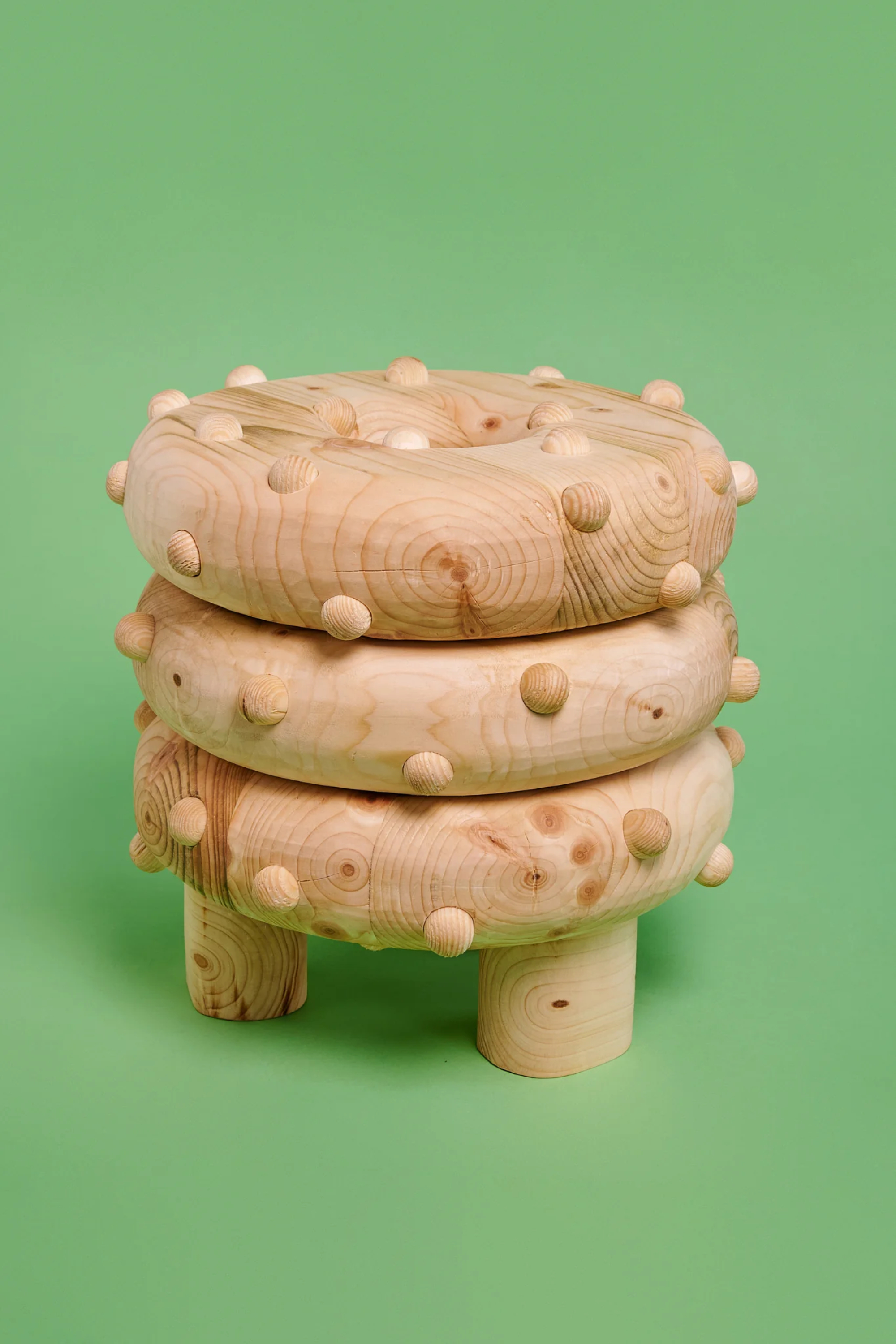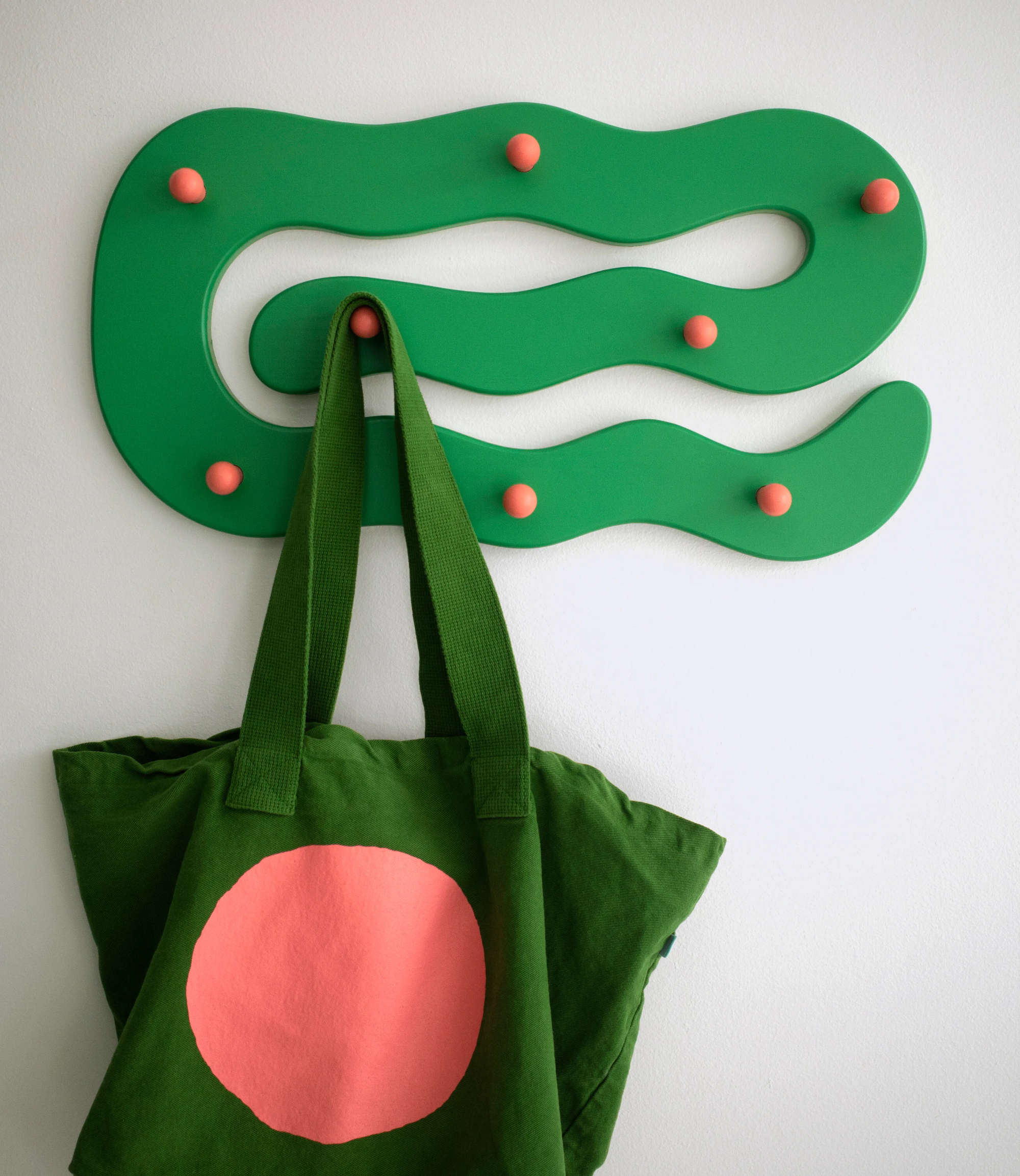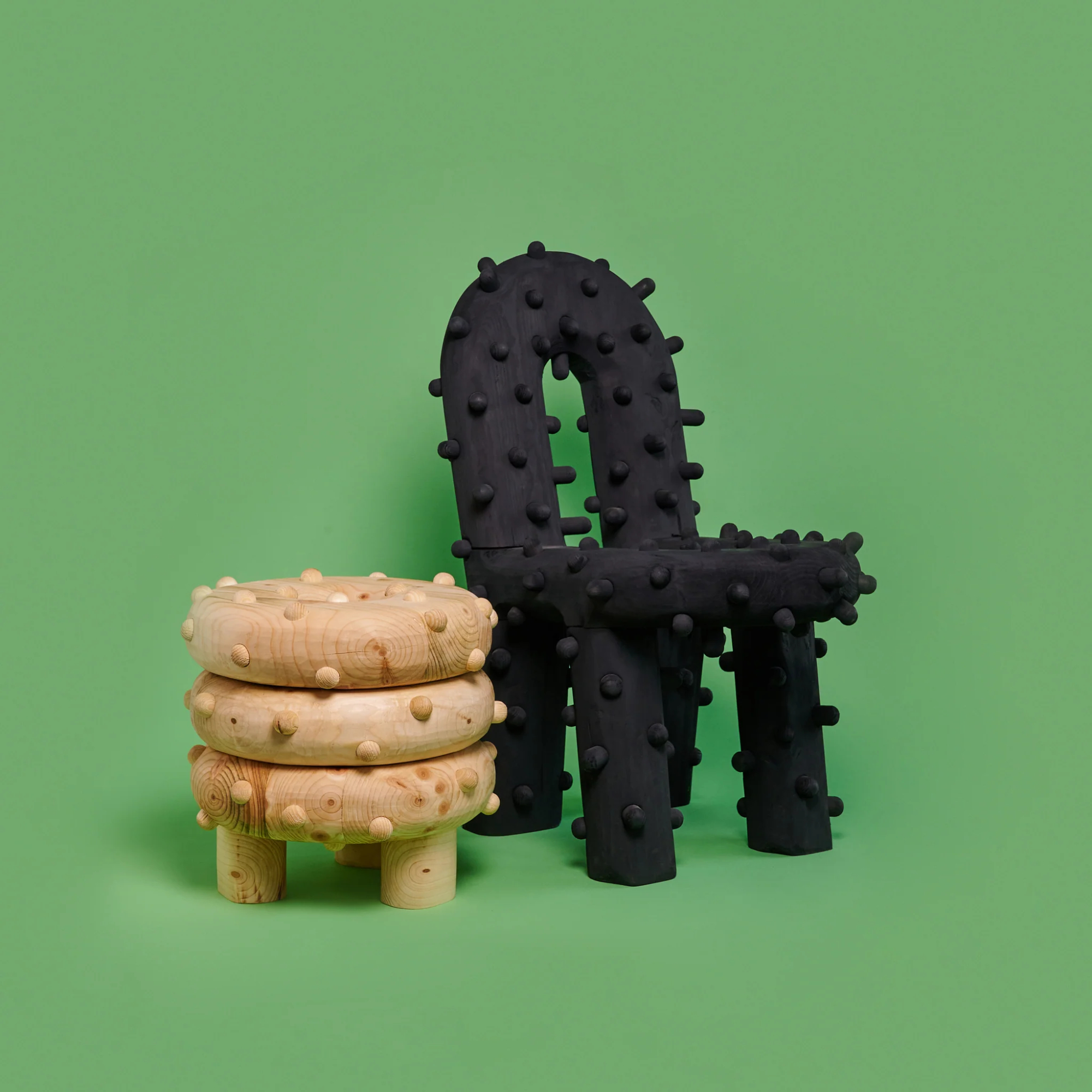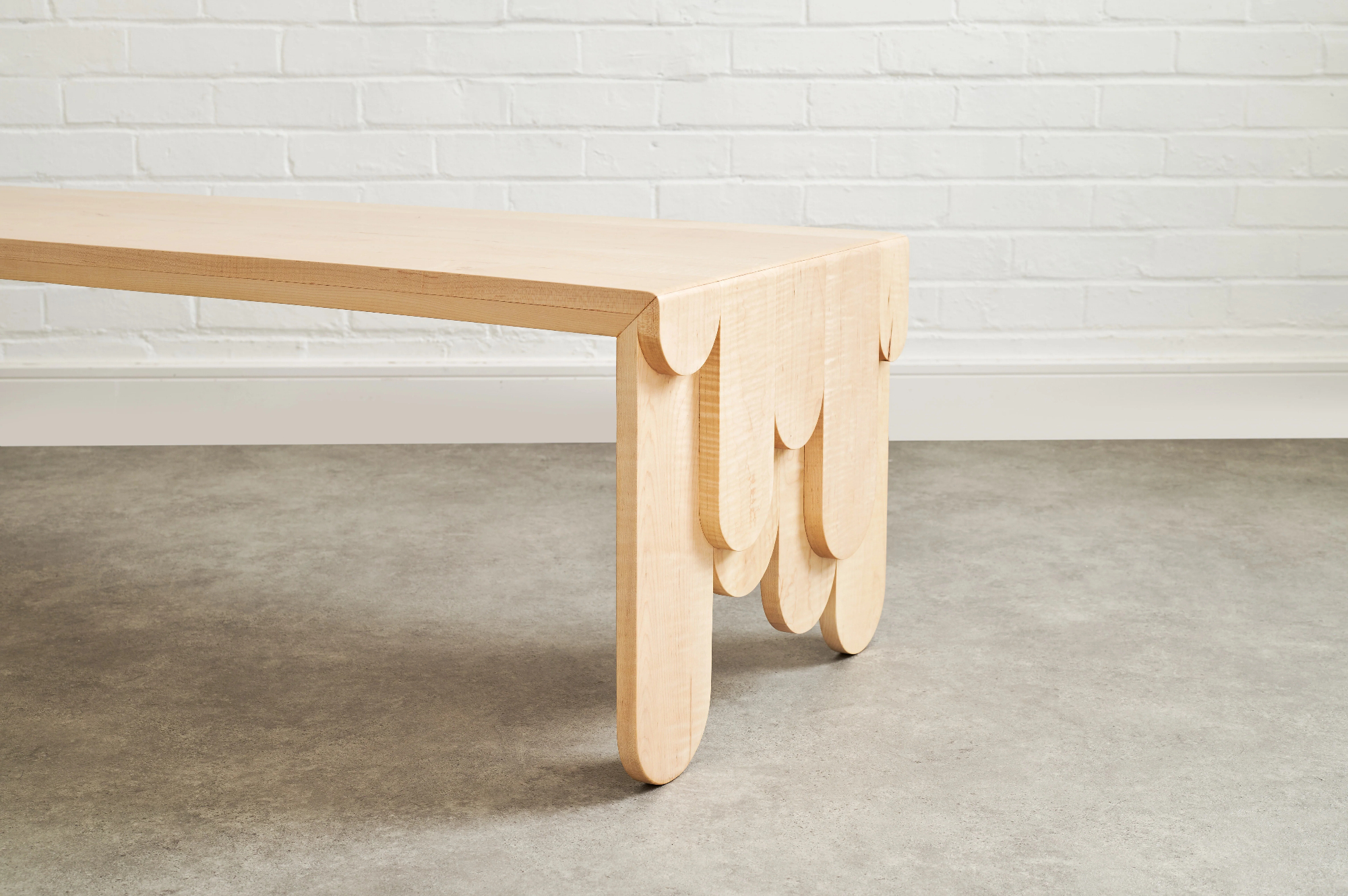Playful forms, sculptural instincts, and a design language shaped by place
In a design landscape increasingly drawn to the imperfect, the peculiar, and the emotionally charged, James Burial’s work feels not just relevant—it feels needed. Based in Brighton by way of the Mojave Desert, the American artist builds functional objects that are more felt than explained. His wall hooks curl with cartoonish delight. His lamps twist, squat, and lean like characters caught mid-thought. He calls the style “soft brutalism.” You could also call it design with a pulse.
Burial began with steel, then shifted to wood, but the throughline has always been touch. Surfaces are generous. Edges are softened. Even the most massive pieces carry a kind of human-scale friendliness—designed not to dominate a space, but to animate it. You sense a conversation happening between object and maker, and by extension, between object and user. It’s not sentimental. It’s physical. And it’s built to last.
There’s a quiet narrative to each piece, but not one that insists on meaning. Much of Burial’s work reflects his own migrations—moving from the vast openness of California to the damp density of the UK. What started as a sculptural response to dislocation has matured into a visual language rooted in emotional geometry. Bold colors arrived with time, maybe as a counterpoint to the British grey. And CNC tools joined the process, not to speed things up, but to free his hands for shaping, sanding, and obsessing over the final finish.
You could call his work quirky, but that feels like a reduction. What James Burial is doing sits at the intersection of humor, muscle, and craft. It’s part of a broader shift in contemporary furniture and object design—away from sterile minimalism and toward something stranger, more tactile, and undeniably personal.



